

INTRODUCTION
Welcome to our spring 2024 edition of our Farms and Estates newsletter. Following the budget, and as we move into a new tax year end, this is a very tax focused newsletter but hopefully keeps you abreast of the rapidly changing tax regime.
We live in interesting times, as we approach an election possibly in the autumn, we remain impacted by tensions between Ukraine and Russia as well as Israel and Gaza. The weather also continues to add additional pressure with much land in Somerset still underwater. As we look forward, planning cashflow continues to be a vital tool to protect businesses from uncertainties, as Kate identifies in her article, and business’ should continue to maximise cash flow – see James’ article on SFI.
For those who provide holiday let accommodation, please read the articles on the budget, the abolishment of FHLs and VAT and holiday accommodation and get in touch if you require any help and advice.
I am pleased to share with you that Grace Popham and Lindsey Johnson both completed their Chartered Accountancy exams, passing their finals with flying colours at the end of last year. They have also both since enjoyed some time away from the office, with Grace lambing at home and Lindsey travelling to Australia. We aim to provide a flexible work place to study and enjoy a career in accountancy for farms and estates, whilst allowing everyone to enjoy their individual past times. Please see our recruitment page on our website – we have two remaining places for school leavers or graduates to join our training scheme within the farms and estates team.
Finally, please check out the dates for your diary as we look forward to the summer shows and we hope to see you at these or Badminton in May, with hopefully some good weather too!
SAM KIRKHAM Partner and Head of Farms & Estates Team
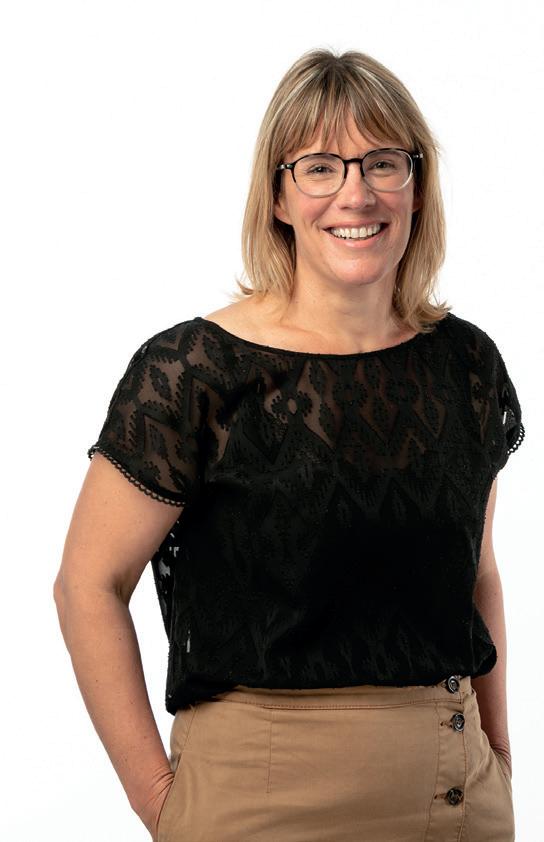
THE SPRING BUDGET – WHAT DOES IT MEAN FOR FARMS AND ESTATES?
As expected, given the upcoming general election, the spring budget delivered many announcements on government spending and tax and national insurance give aways. There were two key announcements which will impact rural businesses which are outlined further below, as well as some other notable announcements.
Furnished holiday lets
A major announcement is the planned abolition of the furnished holiday let (FHL) rules from 6 April 2025. This was aimed at delivering more housing, at a time where demand outweighs supply. However, it would seem Treasury failed to consider the impact of this on hospitality and rural businesses.
What this might mean for FHL businesses is covered in more detail in the next article by Kate Hardy. However, I should add, that there is much lobbying of government on this issue. In particular, in its review of property income; simplifying income tax for residential landlords, the Office of Tax Simplification (OTS) recommended a ‘brightline test’. If the FHL regime is abolished, the government should consider the boundary between trading and non-trading being more certain with the possibility of introducing a ‘brightline test’ to provide a clear test for when property letting activities would qualify as a trade. This could protect existing tax reliefs for qualifying genuine commercial holiday let businesses.
The OTS considered possible factors to be included in the ‘brightline test’’ such as:
a minimum number of properties let,
letting on a short term basis,
no personal use of the property, and
a minimum level of hours per week necessary to be devoted to run the business.
Suffice to say we will be reviewing draft legislation as it is released and will provide an update when we know more.
Inheritance tax (“IHT”) – agricultural property relief (“APR”) and woodlands relief
The scope of the above reliefs will be restricted to property in the UK from 6 April 2024. Therefore, owners of agricultural land or woodlands in the EEA, Isle of Man or Channel Islands should take advice.
Following consultation, the government announced that, from 6 April 2025, the scope of IHT APR will be extended to land managed under an environmental agreement with, or on behalf of, the government, devolved administrations, public bodies, local authorities, or approved responsible bodies.
Further they will not restrict APR to tenancies of at least 8 years and they will establish a joint HM Treasury and HMRC working group with industry representatives to identify solutions that provide clarity on the taxation of ecosystem service markets where existing law or guidance may not provide sufficient clarity.
Further clarity will still be required on the above, and there remains the question as to whether such environmental activities will be enough to support a claim for business property relief for IHT purposes, and how these activities impact on the trading status of a business operating such schemes.
Other budget announcements
Other announcements impacting rural businesses included:
The main rate of Class 4 self-employed National Insurance will reduce from 8% to 6% from 6 April 2024 (having reduced from 9 to 8% from the same date in the autumn statement) saving up to £1,500 per individual a year.
The main rate of Class 1 employee National Insurance will reduce from 10% to 8% from 6 April 2024 having reduced from 12% to 10% from the same date in the autumn statement) saving up to £1,130 per individual a year.
From 6 April 2024, the high-income child benefit charge (“HICBC”) threshold will be increased from £50K to £60K, and it won’t be fully withdrawn until a person’s income is £80K. From 6 April 2026, the HICBC will be assessed on household income instead of an individual’s income. This might protect, on average, £1,260 of additional income for some families.
The capital gains tax rate on sales of residential property will reduce from 6 April 2024 from 28% to 24%. Clearly this is a measure, alongside the abolition of the FHL regime, to bring more residential property onto the market, encouraging sales of second homes.
Stamp duty land tax (SDLT) multiple dwellings relief will be abolished from 1 June 2024. This relief has helped reduce SDLT liabilities on farm purchases including more than one dwelling.
The VAT registration threshold will be increased from £85K to £90K from 1 April 2024. SAM

ABOLITION OF FURNISHED HOLIDAY LETTINGS TAX REGIME
In the 2024 Spring Budget, the government announced it is to abolish the Furnished Holiday Lettings (“FHL”) tax regime, eliminating the tax advantage for landlords who let short-term furnished holiday properties. These changes will take affect from 6 April 2025 for income tax and capital gains tax and 1 April 2025 for corporation tax purposes and draft legislation will be published in due course.
In addition, we are advised the draft legislation will include an anti-forestalling rule. This will prevent anyone obtaining a tax advantage using unconditional contracts to obtain a capital gains relief under the FHL rules. This will take affect from the date of the Budget, being 6 March 2024.
The government believe this will generate around £300 million from landlords but what does this mean for FHL owners?
Well, properties that qualify as FHLs currently take advantage of favourable tax benefits compared with other property businesses.
For a start, income from a FHL business is treated as earnings for the purpose of making pension contributions, unlike income from property, which is treated as investment income.
For income tax purposes, FHLs also currently benefit from:
Unrestricted income tax relief for finance charges and mortgage interest.
Flexible profit-sharing; and
Capital allowances on items of furniture and fixtures and fittings within the property.
With regards to capital allowances, in many circumstances the initial outlay may have created substantial income losses or a large capital allowance pool from which to claim. We will have to wait to see how the transitional rules deal with this going forward.
As a planning point, if your FHL property has not undergone a capital allowance review, then please do get in contact with us as soon as possible as there could be an opportunity to review this and ‘bank’ the allowances before the changes come into force.
For capital gains tax (“CGT”) purposes, FHLs qualify as business assets and therefore benefit from CGT reliefs.
For instance, if you sell an FHL and it meets the qualifying criteria, the gain (if within your £1m lifetime allowance) can be taxed at 10%, compared with 24%, for higher rate taxpayers, on the disposal of long term lets.
As a business asset, FHLs can also currently be gifted, say to your children, with no immediate tax charge.
In addition, FHLs can qualify for rollover relief, which can defer gains on reinvestment, although this would be restricted by any period the property was not used as an FHL.
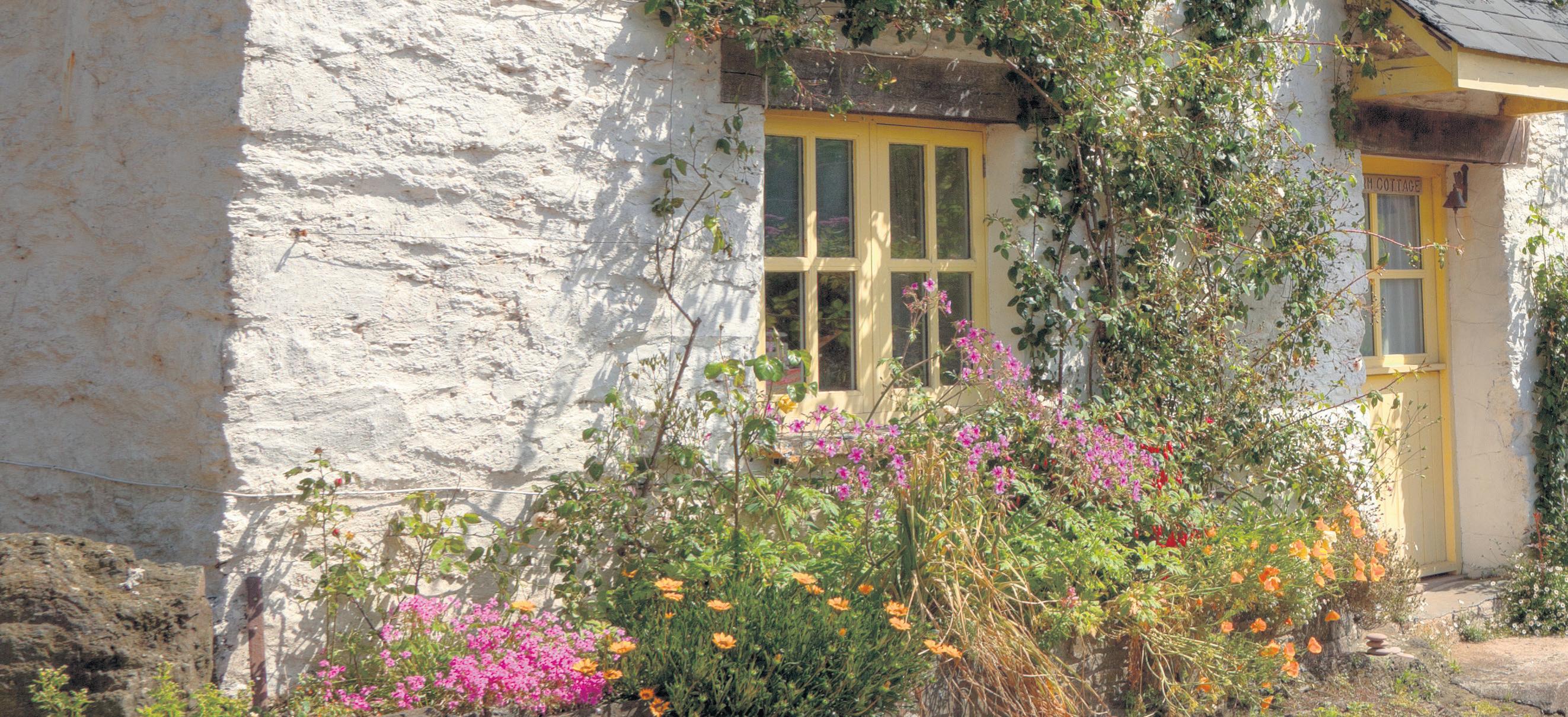
If you are looking at either reinvesting, gifting or selling your FHL, please do get in touch to consider the impact of the proposed new rules, sooner rather than later.
For Inheritance tax (IHT) purposes, there is no special treatment for FHL properties. Generally, the market value of any FHL property (net of any liabilities) falls within a deceased estate and is subject to IHT in full.
To qualify for Business Property Relief (BPR), which provides relief for IHT purposes, FHL owners have to demonstrate that services have been provided ‘above and beyond’ what would normally be expected of just holding an investment. The level of services provided having to be more akin to a hotel. As such, there have been very few cases where BPR has been allowed. While this means there is no change to the treatment of FHLs, perhaps by removing the ‘special treatment’ for FHLs, will help reduce any ambiguity.
A key question you may ask is whether this will impact the VAT position.
Currently, income from long term lets is exempt for VAT, whereas income from FHLs is Vatable. With FHL owners having limited VAT costs, it would therefore be great news for most landlords if these changes removed the requirement to be VAT registered.
If the government’s aim is to simplify the tax system and put FHLs on a level playing field with normal property lets, I personally don’t feel it sits right if FHLs continue to be a
vatable supply. However, if the government’s main objective here is to raise revenue, this change would be unlikely. Unfortunately, it also sounds unlikely when speaking with our VAT specialists too. For VAT purposes, as for IHT purposes, FHLs don’t have any ‘special’ regime. Instead, the VAT legislation purely stipulates that ‘income from self-catering holiday accommodation’ falls within the scope of VAT. So, unless we are going to have a change in VAT legislation, then this will not alter. As a result, FHL owners will be in the worst of both worlds – chargeable VAT income but with no beneficial income tax or CGT reliefs.
Assuming the FHL income remains chargeable to VAT, a big consideration, will be whether a FHL owner should decide to rent the property as long term lets instead. Unless the property is opted to tax, the change of supply would mean the property income becomes an exempt supply. If this resulted in the property business de-registering for VAT, then there could be a claw back of VAT previously claimed, on de-registration.
Please do therefore speak with us to consider these implications, before making any decision.
We’ll keep you updated as and when more is published but, in the meantime, if you would like to discuss your position, please do get in contact.
Following on with the VAT and holiday accommodation theme, please see Steve’s article next that focusses on a case regarding the Tour Operators Margin Scheme.

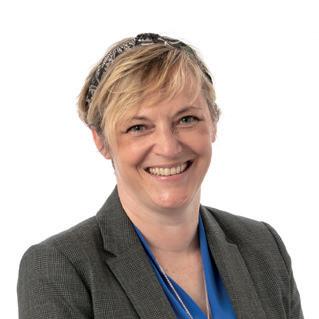
KATE HARDY
Farms & Estates Team
kate.hardy@albertgoodman.co.uk
VAT AND HOLIDAY ACCOMMODATION

Letting holiday accommodation to guests is generally VAT-able, so if the person is VAT registered, VAT at 20% is due on this income - equivalent to 1/6th of the gross charge made to the guest. If an agent takes a commission, the owner cannot reduce its takings by the commission, but can claim any VAT charged on the commission as input tax. The gross price for the accommodation, not the money you receive, counts toward the VAT registration threshold.
WHAT IF THE PERSON LETTING THE PROPERTY IS NOT THE OWNER OF IT?
Things get interesting. Let’s use as our example a VAT registered farming partnership (“Mum & Dad”) which owns a farm. Their adult child, (“Sam”) lets out a surplus farm cottage for holiday accommodation. Sam’s turnover is below the VAT registration threshold.
Clearly, if the letting income was received directly by the partnership, VAT would be due on the income. It is important that the paperwork and structuring reflects that it is Sam operating the holiday let business. For example, there needs to be a proper lease or license between Mum & Dad and Sam and the letting
“paperwork” with guests needs to be in Sam’s name.
If Sam is not VAT registered, Sam cannot recover VAT on any refurbishment works or the purchase of the linen and furniture, etc. The partnership cannot automatically reclaim the VAT on Sam’s costs either.
Whether Mum & Dad need to charge VAT on the rent to Sam is moderately complex. Conventional wisdom is that if Mum & Dad lease the cottage for a fixed periodic rent, without specifying that it must be used for holiday accommodation, assuming there are no planning or other restrictions on occupancy or use, and it is Sam that takes the risk/reward of running the holiday accommodation, Mum & Dad don’t have to charge VAT.
WHAT IF SAM’S INCOME IS ABOVE THE VAT THRESHOLD?
Under normal VAT accounting, Sam must charge VAT on the full value of holiday accommodation but can reclaim VAT on relevant costs.
However, there is a case going through the Courts whereby a company in Sam’s position has only accounted for VAT on the Margin, after deducting
(1) the rent paid to the landlord; (2) other direct costs such as cleaning, maintenance etc.
The company – Sonder Europe Limited - successfully argued that it was required to account for VAT under what is called the Tour Operators Margin Scheme (“TOMS”).
Sonder’s case is that TOMS applies to its fact pattern because it buys in accommodation and resells it “without material alteration” to a consumer. HMRC says not and has appealed its loss. HMRC’s Appeal is due to be heard in December 2024.
Under TOMS, by the way, Sam would not be able to reclaim VAT on the direct costs, including the rent, so if Mum & Dad do not need to add VAT to the rent, this will increase Sam’s profit margin.
WHERE DOES THIS LEAVE BUSINESSES SUCH AS SAM’S?
Sam needs to consider this carefully, given that it is probable that HMRC will continue to contest the use of TOMS through the Courts. It may be some years before the dust finally settles and the correct VAT treatment becomes clear.
Sam needs to consider whether the way in which the business operates means it can be argued that TOMS applies.
If so: -
1. Sam needs to work out whether TOMS will produce a significant saving. Sam will need to identify the direct costs associated with the accommodation services, including rent, cleaning, maintenance, and other relevant expenses.
2. Can Sam argue that the business does not need to register, given that under TOMS only the profit margin is counted when looking at the VAT registration threshold?
3. If VAT registered, Sam needs to decide whether to account for VAT on the full selling price, but submit protective claims arguing TOMS applies, or account for VAT under TOMS from the start.
We would be happy to discuss the options with affected businesses.
 STEVE CHAMBERLAIN VAT Senior Manager steve.chamberlain@albertgoodman.co.uk
STEVE CHAMBERLAIN VAT Senior Manager steve.chamberlain@albertgoodman.co.uk
MAXIMISING TAX RELIEF ON CAPITAL EXPENDITURE
Where farming companies are looking to invest heavily in capital items, there is an additional tax relief now available. Known as ‘full expensing’ (“FE”), it gives 100% allowances against the cost of all new and unused qualifying plant and equipment, or 50% where the purchase relates to a special rate pool item (broadly, integral features such as lighting and electrical installations, or long-life assets).
While FE was set to expire on 31 March 2026, the Government announced in the 2023 Autumn Statement that this, together with first year allowances, would be made permanent.
All businesses, including partnerships and sole trades, can take advantage of the Annual Investment Allowance (“AIA”), giving 100% relief on total expenditure up to £1 million. This can be used for both new and second-hand items and includes special rate items such as solar panels and integral features.
FE can be claimed in addition to the AIA, and where expenditure is incurred on special rate items, a 50% allowance can be claimed. As special rate items do qualify for the AIA, the 50% rate is only beneficial if the total expenditure exceeds £1 million.
If a tax adjusted loss arises, this can be carried forward to offset against future profits or carried back 12 months to obtain a refund of corporation tax paid in an earlier year.
When a company subsequently disposes of an asset on which the allowances have been claimed, a balancing charge must be made equivalent to the sale proceeds. Where 50% relief was claimed, a charge of 50% of the disposal proceeds arises with the balance being deducted from the capital allowance pool. As such, a record must be kept of each separate item on which the allowances are claimed.
HMRC’s recent guidance confirms that mixed partnerships may also be able to take advantage of FE – see Tom’s article next looking at this specific area.
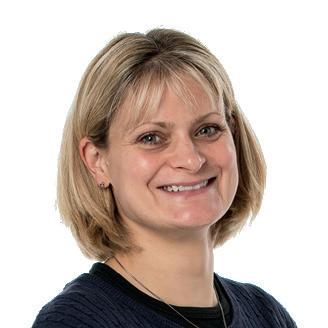 LIZ JONES Farms & Estates Team liz.jones@albertgoodman.co.uk
LIZ JONES Farms & Estates Team liz.jones@albertgoodman.co.uk
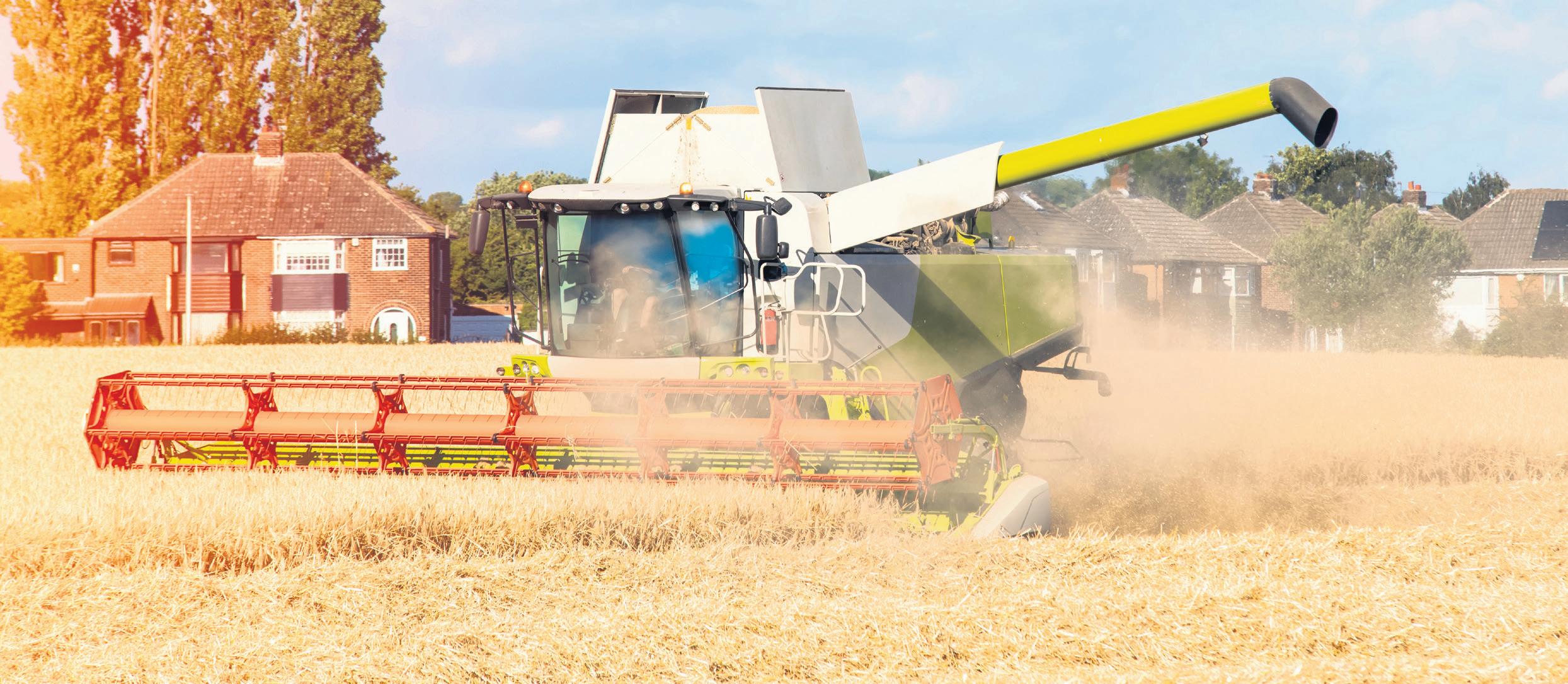
UPDATE ON CAPITAL ALLOWANCES FOR MIXED PARTNERSHIPS

TOM STONE Farms & Estates Team
tom.stone@albertgoodman.co.uk
In January 2024, HMRC updated its guidance to confirm that a partnership which includes a corporate member is able to claim certain capital allowances in so far as the allowances relate to the corporate member’s profit share. These include the super deduction (“SD”) and full expensing (“FE”), but do not include the annual investment allowance (“AIA”), which remains unavailable to mixed partnerships; it was previously understood that mixed partnerships could not access either the SD or FE, in the same way they could not access the AIA.
It has been common practice for farming partnerships to have a corporate member which means this clarification could be beneficial for many farming businesses.
Under the new guidance, HMRC states that where a partnership has some members within the charge to income tax and some within the charge to corporation tax, the FE and SD allowances can be claimed, but it will be necessary for the partnership to submit more than one computation, being one in respect of the individual members subject to income tax, and the other in respect of company members subject to corporation tax.
It should be noted that while the SD is referenced in the guidance, this allowance came to an end for any qualifying purchases made after 31 March 2023 and, therefore, it is likely this will only be beneficial if amended returns for last year are submitted, although strict amendment time limits apply.
WHAT THIS MEANS IN PRACTICE
Two computations will now be needed going forwards, if businesses are to benefit from this relief, but the mismatch in rules between companies and individuals does give rise to complexities which have not yet been addressed by HMRC, and the savings may not be as great.
We will provide a further update once more information has been released.
Therefore, it could be an area of guidance that is quickly backtracked like we have seen with double cab pickups in February, and the closure of the helplines over the summer.
Managing the Cash – Tax Payments
The latest income tax changes in respect to the change in basis periods could significantly impact cashflow for those who did not have a 31 March or 5 April year-end.
Please note, these changes do not affect sole traders or partnerships that already have a 31st March/5th April year-end or if you trade through a limited company.
Whether or not you have decided to change your year-end, individuals will still be taxed to 31 March/5 April, providing a longer taxable period as shown below.
Also shown here is the ‘Transitional period’, being the additional period to bring you in line with 31 March/5 April. While the transitional profits are excluded when considering farmers averaging, these trading profits can be spread out over five years to help reduce the tax impact.
It is easy to see here that the increased period being taxed this year could result in a spike in your 31st January 2025 tax payment.
When planning for these basis periods changes, some of the things that should therefore be considered are:
Overlap profits – these being the profits that were taxed twice when you joined the partnership
Future profits and whether you expect them to increase or decrease
Whether you consider trading for more than 5 years
Opting to suffer the tax on all the transitional profits up front as it may be taxed at a lower rate
Future cash flow and whether cash is available now.
The key starting point is to understand your individual tax position and then plan your cashflow. You can aid this by:
Saving early to build your tax reserves.
Consider new schemes, such as SFI, that provide quarterly payments to support cashflow.
Forecast your performance, increasing cash through trading.
Plan capital investments for the next 5 years.
Speak to HMRC to discuss payment plans.
Please do contact us if you would like to discuss this in more detail.
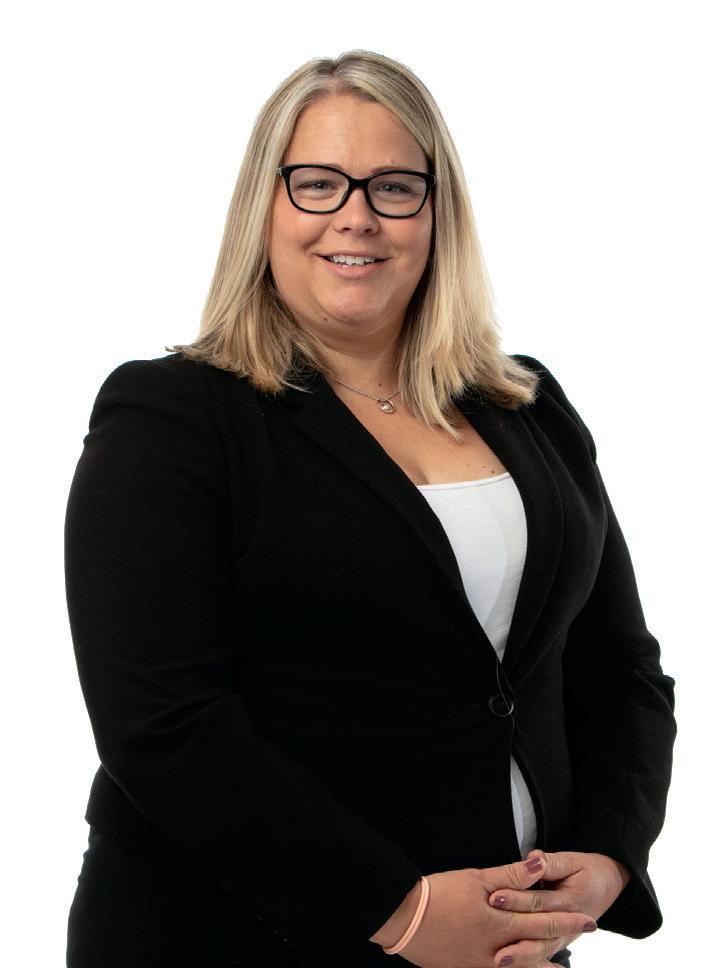
IncorporationIs it really worth it?
One quick and simple question that clients ask is “Should I incorporate?”. As always with questions such as this, the simple answer is “it depends”. For many clients the main driver for asking the question is the level of tax that they have to pay on an annual basis. Will this “annual tax” be less or more if the business was operated through a limited company?
Tax for the Sole Trader

ANDREW LAW Tax Team
andrew.law@albertgoodman.co.uk
The Sole Trader pays two types of tax on their trading profits. Income Tax and National Insurance. The amount of Income Tax and National Insurance that is paid at different levels of profit is shown in Table 1. Please note, the figures in the table don’t take into account whether the individual has any children or whether they have to make any student loan repayments.
What Rates of Tax does a Limited Company pay?
Limited companies pay corporation tax. The rates that apply depend on the level of profit being generated. For example, if a company generates profit of less than £50,000, then the rate of corporation tax is 19% whereas profits generated in excess of £250,000, are taxed at 25%. Confusingly, profits generated between £50,000 and £250,000 are taxed at 26.5%.
The immediate reaction of many clients is to say, “Surely the answer is obvious – I need to be a limited company?” However, it costs money to take money out of a limited company. That “cost” is personal taxation – and this tax is of course in addition to the corporation tax that the company is paying.
As such, before any decision is made to incorporate, we need to consider how much of the “post-corporation tax profit” is going to be extracted from the company.
If we assume all of the profit is to be extracted – perhaps to fund an extravagant lifestyle, then a combination of personal tax and corporation tax will have to be paid. Assuming the owner shareholder takes a small salary and pays the remaining available profits as dividends, then the total tax paid and funds available are as shown in Table 2 below. The amounts shown in Table 2 are shown alongside the amounts available to the sole trader from Table 1.
As can be seen above, any benefit from incorporating - where all monies are extracted - is negligible at best. Of course, this assumes that all profits are being extracted. If profits are instead retained in the company – perhaps to invest in working capital or to pay down debt – this would mean savings over and above those highlighted above.
Of course, with any business decision there are many different factors in play, as highlighted in Sarah Cleaves’ article – so, when your accountant answers “it depends” be patient... they are thinking!
Incorporation – Is it still worth it?
Other aspects
LIMITED LIABILITY
When you incorporate your business, it becomes a separate legal entity. As a result, your personal assets are protected from business debts and liabilities. If the company faces financial difficulties, your personal assets remain protected outside of the company. However, that is unless you have acted negligently or fraudulently, in which case the corporate veil, as it is known as, is removed and the directors can be found personally liable.
DISADVANTAGES OF USING A LIMITED COMPANY Inheritance tax (IHT)
Whilst the shares of a trading business would qualify for Business Property Relief (“BPR”), the value of a Director’s Loan Account is chargeable to Inheritance Tax (“IHT”).
Also, where assets are held outside of a company, but used in the company for the trade, only 50% Business Property Relief (BPR) may be available on the value of that property. Whereas 100% BPR may be available on property used in a trade through a sole trade or partnership structure.
Farmland, however, would still obtain 100% Agricultural Property Relief (“APR”) on the agricultural value, even when held outside the company.
If the land and buildings are transferred into the limited company then BPR could be increased to 100%, however there would be stamp duty land tax and potential capital gains tax implications of making such a transfer. Also, once the property is owned by the company it would be very costly to extract it again and there would be greater tax implications if the property were to be used again personally.
ADDITIONAL COSTS AND ADMINISTRATION
There are additional costs in running a limited company.
Disclosure of statutory accounts and ownership details are required to be submitted to Companies House where it is then also publicly available. In addition, this information is soon to increase, with Companies House wanting more transparency. This will involve reporting your profit and loss details on public record at some point going forward.
Benefits in kind (“BIK”) - When operating as a company, any personal costs paid for by the company, such as car expenditure, or benefits received from the company, would give rise to a BIK. This is then taxed on you personally, with the company paying tax on this as well.
Annual tax on enveloped dwellings (“ATED”) - may be due if a company has a beneficial interest in residential property valued over £500K. However, where property is let commercially or used in a trade, relief from ATED can be claimed.
SUMMARY
In summary, incorporation is never a one-size-fits-all solution. When considering incorporation, it is therefore important to understand not only all of the tax implications, but to also consider the additional points above, to help decide upon the structure that aligns best with your business and personal needs both now and in the future.
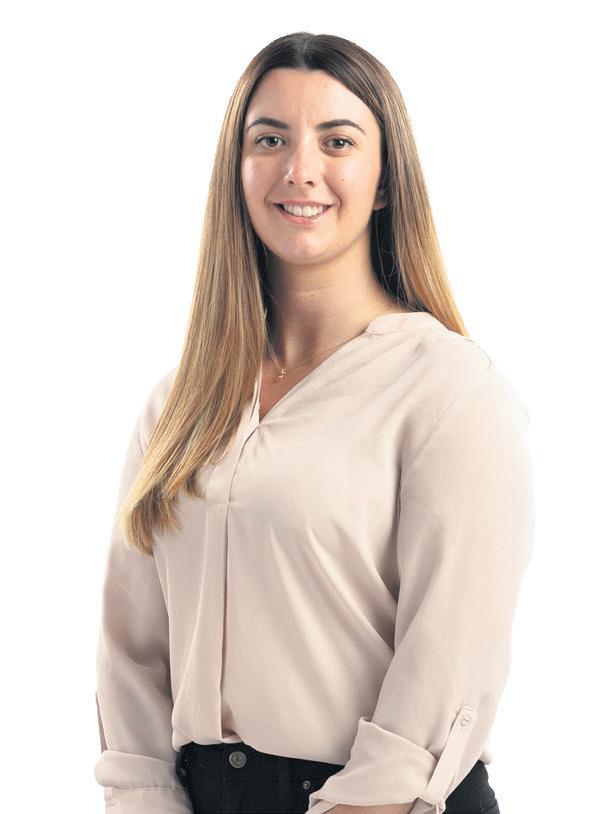 SARAH CLEAVE Farms & Estates Team
SARAH CLEAVE Farms & Estates Team
sarah.cleave@albertgoodman.co.uk
Subsidies –what is going on?
The term Sustainable Farming Incentive (SFI) has been around for a couple of years now. The SFI has replaced the Basic Payment Scheme (BPS) which ended at the end of December 2023 and ‘Delinked payments’, which replace the BPS, will be paid on a reducing basis from 2024 until 2027, when they will end!
The SFI and the Environmental Land Management Scheme (ELMS) is an information overload in terms of all the different options available. There are 23 actions that farmers are eligible for, which include soil health, moorland assessment, nutrient management, and integrated pest management to name a few. As a result, lots of farmers and landowners are being put off by the amount of red tape and time needed to get a handle on what will work best for them.
The new SFI agreements will last for three years and payments will be made every quarter, which will be a regular cash injection to farming businesses. Whilst the SFI management payment will be only £20 per hectare, capped at £1,000 per year (50 hectares) for each farming business with a Single Business Identifier (SBI), there are lots of extras that can be claimed.
There are then the 23 actions to utilise, some worth a few pounds per hectare and some that are hundreds of pounds per hectare, depending on what you are going to do.
There is no one size fits all but having conversations with many of our farming clients there are options that will fit their specific circumstances and form part of the overall farming business strategy going forwards.
If there are payments available for doing things that will benefit your business, then it makes sense to tap into what funds are available to help cover the costs and help top up your income.
Several farming businesses I have spoken with are going to be planting herbal leys. They are more drought tolerant than rye grass and should ensure better grazing for livestock and hopefully prevent the need for buffer feeding in the driest months, when hopefully this
incessant rain will have stopped! The annual payment rate for herbal leys is £382 per ha, so 50 hectares would bring in £19,100.
Flower rich grass margins, blocks, or in-field strips receive a payment of £798 per ha and winter bird food on arable and horticultural land receive a payment of £853 per ha. As you can see, there are some large payments available, hence why some businesses have decided to make the most of what is available and move away from food production. As a result, DEFRA have now announced that farms will only be able to put 25% of their land into six of the SFI actions which take land out of direct food production.
Making use of an experienced land agent or farm consultant that has a handle on what is available should therefore be a very cost-effective way to not only ensure that the business receives the right subsidies but should also be able to help improve cashflow while also focussing on the business’ longer-term goals.
While we will not be able to provide the detailed advice, we can point you in the direction of the land agents or farm consultants who can.


MTD FOR ITSA
Making tax digital for income tax self-assessment (MTD for ITSA) will require sole trade businesses and landlords with profits over £50,000 to maintain digital records and submit quarterly tax returns from April 2026.
From April 2027 this threshold will drop to £30,000 of profits. Partnerships are planned to be introduced but as yet no date has been confirmed.
What you need to do
It is never too early to start to adjust to using digital record keeping and getting ready ahead of April 2026. Many of you will already be on a suitable software as MTD for VAT may have been the catalyst to this.
There are many benefits to using digital record keeping and we are here to support you. Whenever you wish to make the change to digital record keeping please do let us know.
With record-keeping in mind, this brings us nicely to Grace’s article looking at year-end processes.
CHARLIE GREEN Farms & Estates Team charlie.green@albertgoodman.co.uk
XERO TOP TIPS - YEAR-END PROCESSES
GRACE POPHAM
Farms & Estates Team
grace.popham@albertgoodman.co.uk
With many accounting year-ends just recently passed, please find below a checklist of year-end processes to complete, before passing across to us to prepare.
Although tailored to Xero, the main points will be applicable to all year-end processes.
1. Bank reconciliations
Please ensure that all bank transactions are reconciled for the year. In Xero, running a Bank reconciliation report will indicate this as well as show your calculated balance. Please then ensure you check the closing position to your physical (or online) bank statement as connection issues can result in this being wrong. Bank account > Vertical ellipsis > Reconciliation report
Please also reconcile post year-end transactions, so these can be viewed in the reports and considered when reviewing late transactions.
2. VAT return
Please ensure that you have submitted your VAT return for the period covering your year-end and, if additional workings are used, please provide these.
3. Mis-postings & Duplicates
Please check for any mis-postings or duplicated invoices by running an ‘Account transactions’ report in Xero. Accounting > Reports > Account transactions > select your accounting period in date range.
4. Debtors (amounts owed to you)
Please check these by running a report called ‘Aged Receivables Detail’, under Accounting > Reports as at your year-end date. This should only include sales invoices dated within your accounting period that you didn’t receive payment for until after your year-end.

5. Creditors (amounts you owe to suppliers)
This is the opposite of debtors above. Please check these are correct by running a report called ‘Aged Payables
Detail’, under Accounting > Reports as at your year-end date. Please ensure that this only includes outstanding bills that are within your year-end but not paid until after your year-end.
6. Hire Purchase (HP) agreements and/or loan agreements
Please provide details of any new HP or loans taken.
Uploading PDF’s or photos to transactions included in Xero is a great way to provide this additional information. You can use this function on bills, invoices or receive/ spend money transactions. Just click on the ‘Add Details’ button on the reconcile screen.
My last two points are more general to the year-end process and not necessarily Xero tips.
7. Notes/ summaries
Please do provide some additional notes or narrative – either by email, letter or via a call - to highlight any significant changes from last year and/or to point out anything that has changed.
8. Stock sheets
We aim to get stock sheets out to you as close to your year-end as possible. Alternatively, please write all your stock numbers and values down as close to your year-end as possible and include with the year-end information.
This is by any means an exhaustive list, but I hope it helps provide some structure to the year-end process and the information we require before we start the preparation.
Fundraising
Finally, talking about exhausting, Grace and her friend Ellena are training to run a marathon on Sunday 21st April 2024.
Grace has always said she wanted to run a marathon post-study but has also been keen to raise money for The Farming Community Network (FCN) - a great charity that provides lots of help and support to those within the farming community.

If you would like to sponsor them, please follow the QR code to their JustGiving page.

OTHER NEWS and dates for the diary



6-9pm, Tue April 30
The Devon Hotel, Exeter
albertgoodman.co.uk/events/the-future-of-farmingwith-hsbc-and-stags
6-9pm, Thur May 2
Cadbury House Hotel, Congresbury albertgoodman.co.uk/events/the-future-of-farmingwith-carter-jonas
Please join us from 2.30pm for tea and cake

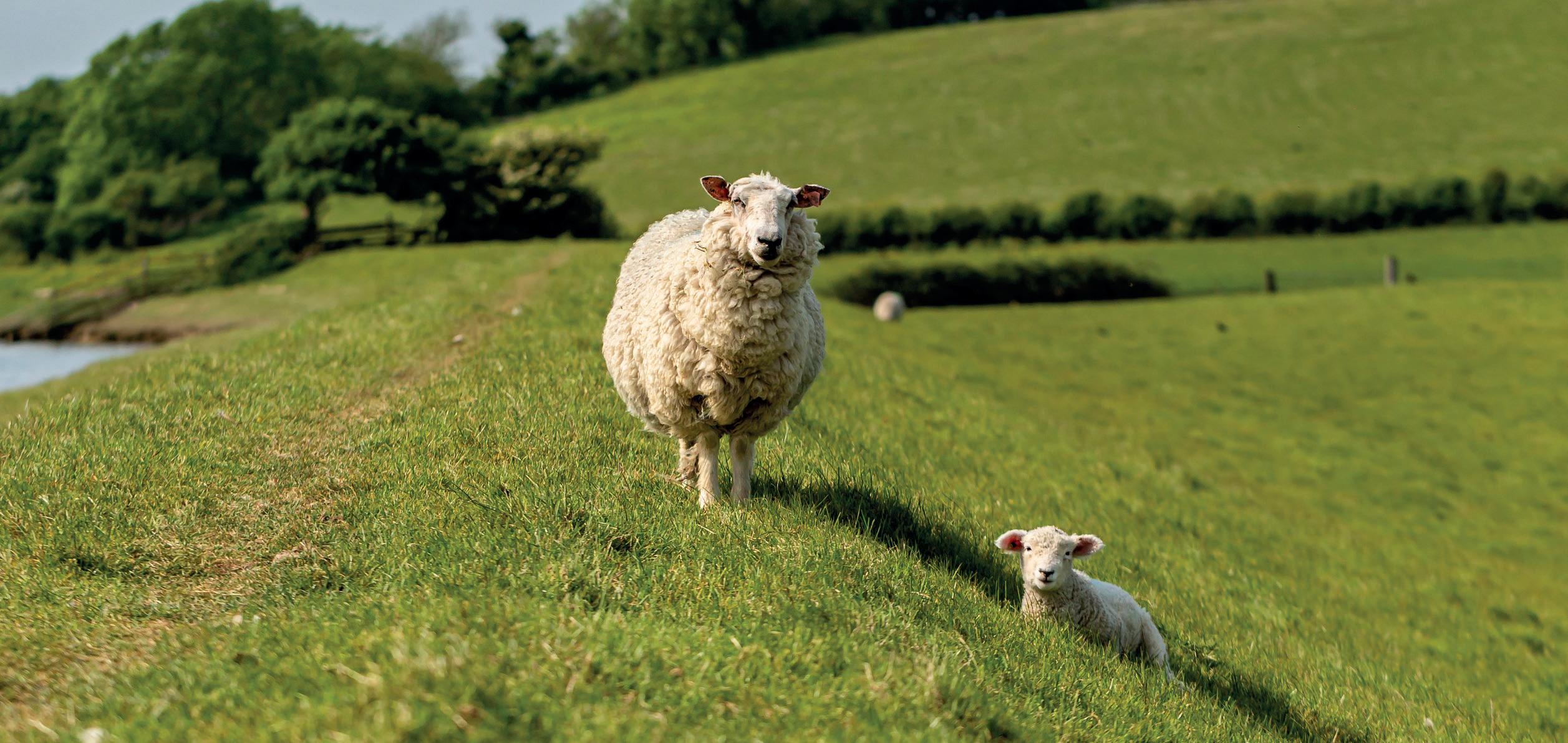
SAM KIRKHAM
sam.kirkham@albertgoodman.co.uk
01823 250350
IAIN MCVICAR
iain.mcvicar@albertgoodman.co.uk
01823 250283
KATE HARDY
kate.hardy@albertgoodman.co.uk
01305 752064
KATE BELL
kate.bell@albertgoodman.co.uk
01823 250286 THINK
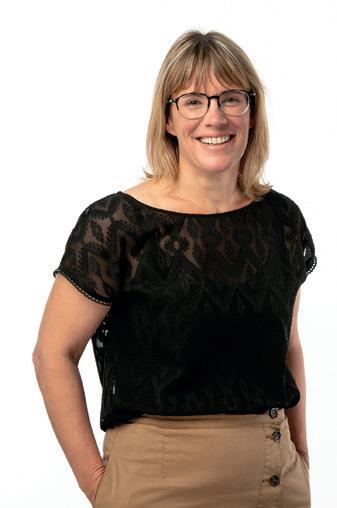

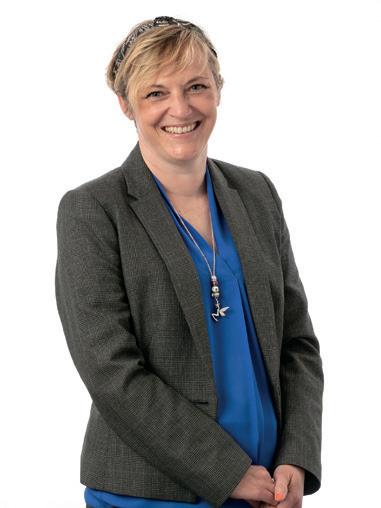
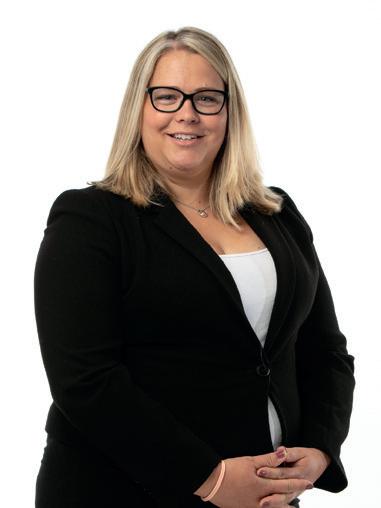



If you would like this newsletter to be sent to a different address then please send your
You may also use this address to opt out of receiving this newsletter or for any other queries you may have. If you would like to see our privacy statement please log on to our website:


